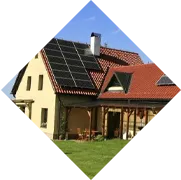size of 60 cell solar panel
Understanding the Size of 60 Cell Solar Panels
As the world pivots towards renewable energy sources, solar power has emerged as a frontrunner in the quest for sustainable energy solutions. Central to this transformation are solar panels, the heart of solar energy systems. When considering the installation of solar panels, one of the most common types examined is the 60 cell solar panel. In this article, we will discuss the size, configuration, and advantages of these panels, providing insights into their role in harnessing solar energy.
What is a 60 Cell Solar Panel?
A 60 cell solar panel consists of 60 individual solar cells, typically made from silicon. Each cell is responsible for converting sunlight into electricity. The standard dimensions of a 60 cell panel are approximately 65 inches (around 165 cm) in length and 39 inches (about 99 cm) in width. The thickness of these panels is usually around 1.5 to 2 inches, making them relatively lightweight and easy to install. While specific dimensions can vary slightly depending on the manufacturer, the general size remains consistent across the industry.
Power Output and Efficiency
60 cell solar panels are known for their balance of efficiency and aesthetic appeal, generating roughly 250 to 350 watts of power depending on the make and efficiency rating. The power output is influenced by several factors, including the cell efficiency, the technology used in the cells (such as monocrystalline versus polycrystalline), and the installation angle relative to the sun. Monocrystalline panels tend to have higher efficiency ratings (around 15-20%) compared to polycrystalline options, making them more suitable for various residential and commercial applications.
Installation Considerations
When installing 60 cell solar panels, homeowners and solar companies must consider several factors beyond the panel dimensions. The roof size, orientation, shading from nearby trees or buildings, and local climate conditions all play crucial roles in determining how many panels can be installed and how effectively they will operate.
size of 60 cell solar panel

Given their size, a standard residential roof can typically accommodate 20 to 30 of these panels, depending on the available area. This configuration can produce a substantial amount of energy, potentially covering the energy needs of an average home. For larger installations, such as commercial buildings including warehouses or solar farms, 60 cell panels can be arranged in larger arrays to maximize energy generation.
Benefits of 60 Cell Solar Panels
One of the primary advantages of using 60 cell solar panels is their versatility. They are small enough to fit on most roofs, yet powerful enough to generate significant electricity. Additionally, they are often more affordable than their larger counterparts, such as 72 cell panels, making them an attractive option for both residential and commercial applications.
60 cell solar panels are also easier to manage and handle, especially during installation, given their manageable size and weight. This can translate to lower installation costs, as fewer resources and less labor are required to set up these systems.
Environmental Impact
Choosing solar energy, particularly with 60 cell solar panels, contributes positively to the environment. By harnessing energy from the sun, homeowners and businesses can reduce their reliance on fossil fuels, thereby decreasing greenhouse gas emissions and aiding in the fight against climate change. Over the lifespan of a solar panel system, substantial quantities of carbon dioxide emissions can be avoided, illustrating the ecological benefits of solar power.
Conclusion
In summary, 60 cell solar panels represent a compact and efficient option for harnessing solar energy. With dimensions that fit well on various roof types and a range of power outputs, they provide a viable solution for those looking to invest in solar technology. As the demand for sustainable energy continues to grow, understanding the specifications and advantages of different types of solar panels, including the 60 cell variety, will become increasingly important for consumers and businesses alike. By incorporating these panels into energy strategies, we take meaningful steps toward a more sustainable future.
-
Unlocking Energy Freedom with the Off Grid Solar InverterNewsJun.06,2025
-
Unlock More Solar Power with a High-Efficiency Bifacial Solar PanelNewsJun.06,2025
-
Power Your Future with High-Efficiency Monocrystalline Solar PanelsNewsJun.06,2025
-
Next-Gen Solar Power Starts with Micro Solar InvertersNewsJun.06,2025
-
Harnessing Peak Efficiency with the On Grid Solar InverterNewsJun.06,2025
-
Discover Unmatched Efficiency with the Latest String Solar InverterNewsJun.06,2025







